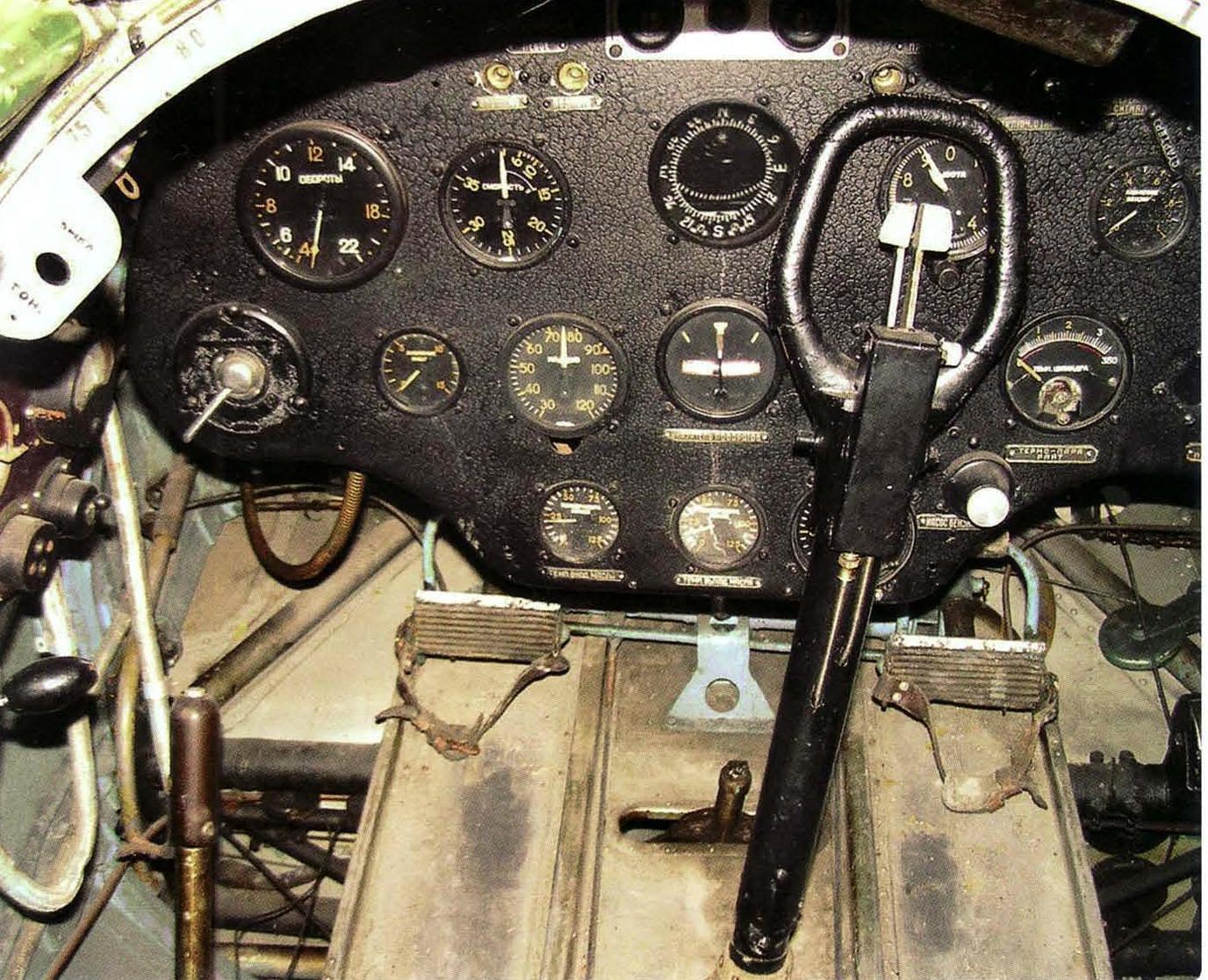WWII RAF fighters had a loop on top of the joy stick in case of hand loss or injury - Anyone know why the Allies didn't copy this very helpful idea?
-
27$\begingroup$ I like to think the RAF were part of the Allies! $\endgroup$– DanCommented Mar 30, 2016 at 8:21
-
$\begingroup$ More than just Spitfires and Hurricanes. Bolton Paul Defiant, Westland Lysander, Hawker Hind, Hawker Tempest, Hawker Typhoon, Blackburn Roc, Blackburn Skua, Gloster Gladiator, Fairey Albacore, Fairey Barracuda, and others also had this control stick style. $\endgroup$– DNLCommented Jul 7, 2019 at 22:01
3 Answers
A control stick with a loop at the top was called a "Spade Stick". Generally only Hurricanes and Spitfires had them.
The cockpits on these aircraft were small and it was a problem for the control column to get full travel for roll control. This was solved by making the control column rotate at about mid-stick instead of from the the floor.
Other aircraft didn't use them because the cockpits were large enough to accommodate a normal stick and still provide good leverage and side to side travel.
The loop was there so a pilot could use both hands on the stick to get more lateral force since the effective length of the stick was now much less than a conventional floor mounted control stick.
Pilots found them to be much more comfortable to hold and loop style sticks did also get used some on larger aircraft with conventional floor mounted control sticks.
-
5$\begingroup$ Don't you enjoy the sharp edges right next to the pilot's knees? Ahh - British aircraft design at its best. $\endgroup$ Commented Mar 30, 2016 at 22:28
-
3$\begingroup$ @Peter: The owner of the knees had a life expectancy of 4 weeks so knee disconfort or injuries were perhaps not a major worry when those things were manufactured. Even today, given the chance, I'd love to sit in that seat. $\endgroup$ Commented Mar 31, 2016 at 13:48
-
3$\begingroup$ @RedGrittyBrick: I know, they had a different attitude back then. Just the instrument arrangements in British planes was deadly already for some. But it's so obvious - they could just had mounted the upper part on the forward side of the column instead the rear. I remember a parliamentary inquiry from 1947 why 10% of RAF pilots had died the year before (1946) in accidents. The answer was this would be normal. In peace time. What an attitude! $\endgroup$ Commented Mar 31, 2016 at 21:49
-
$\begingroup$ Interesting. Yeah, I had always wondered about the strange control columns in Spitfires and Hurricanes. $\endgroup$ Commented Oct 25, 2016 at 19:21
-
$\begingroup$ @RedGrittyBrick funny how that same argument is often used in derision towards Soviet equipment. $\endgroup$ Commented Jul 8, 2019 at 9:14
Would Polikarpov R-5/I-5/I-15/I-16 count?
 I-16 panel. Source. Also photos of an earlier R-5.
I-16 panel. Source. Also photos of an earlier R-5.
It didn't have that peculiar half-stick roll, but it did have the "loop".
I can't say it was "copied" from RAF; after all, R-5 was designed in 1928, which predates most if not all similar British designs. Besides, Britain was not considered by the USSR an "ally" at that time (which didn't prevent them from using/licensing/copying British engines and perhaps other stuff).
Nor would I say it was done for the case of injury. It was just hard to control these airplanes with one hand.
-
$\begingroup$ I believe the Il-2 family and even is successors like the Su-6 and Il-10 also stuck with the loop design. That said, do you have any clue as to why did the loop fall out of favour? $\endgroup$ Commented Jul 8, 2019 at 6:31
-
$\begingroup$ I guess everyone adopted the convention we see today: agile airplanes get a (one-hand) stick, while heavier/less manoeuvrable airplanes get a yoke. If one is going to use both hands, yoke is arguably a more ergonomic design. That said, exceptions and mixed designs exist, such as central stick on the very heavy Tu-160, or the Tu-204 (or Concorde's) yoke which is not that fundamentally different from Spitfire. $\endgroup$– ZeusCommented Jul 8, 2019 at 7:11
I believe the other consideration not mentioned here is that the spade design comes from earlier wwI British designs like the se5a. So it was a carry over from those planes and the trainers like the tiger moth.
The spade facilitated two handed control. The early spits and hurricanes had no hydraulics (which were more costly to manufacture and viewed as vulnerable to failure from enemy flak and bullet damage). Control surfaces were strictly operated by muscle with cables and the modest leverage of the control horns, pullies and assorted linkage. In a dive or steep bank turn with g loads on the pilot it might take all you’ve got to pull back on the elevator.
Hence the observation made by another that heavier planes and multi engine (pilot co pilot) configurations get yolks in the American designs of the period.
The spade also allowed for easy switching of hands to access other levers, knobs etc mounted on either side of the cockpit without having to “let go” of the stick or pass it between your two hands as you would to get the same grip position on a straight stick.
By “allied” designs, I assume you mean American and many of our fighters except the earliest used hydraulics to control flight surfaces.
Oh and don’t forget that the Brits love to garden...so the spade was a familiar implement in their hands. 😉

